Converting a Radial Blower for a 9-Cylinder Radial Engine
The Topic
In radial engines with a central carburetor that suck in through the crank case, the bottom cylinders runs too rich and the top cylinders too lean. The reason is partly that the carburetors are better at building droplets and partly gravity. I once read that in a radial engine crank case there is a rotation speed similar to a tornado, several 100 km/h! As the crank arm is asymmetrical and every edge of a suction pipe or connecting rod causes additional border vortex (so called interfering edges that can’t be avoided) the mixture is not spread out evenly in the engine case. When the radial engine runs in stationary throttle for too long, it easily over greases. The methyl alcohol air mixture condenses on the cooler casing wall of the engine case and therefore gathers in the bottom casing area. When the engine then runs at full throttle, the carburetor is adjusted so that the engine runs at maximum speed. Now I adjust the carburetor so lean till the speed drops. Then the top five cylinders are rather lean. However, the bottom four cylinders run in the optimal range. When I now adjust the carburetor so rich that the speed increases again, the top five cylinders run in the optimal range but the bottom four cylinders run too rich. The top cylinders are up to 50° C hotter than the bottom cylinders (easily verified with an infrared thermometer). That is irritating as the glow igniters ignite temperature related. The hotter the more advanced ignition, i.e. if the cylinders were equally warm during full throttle, the engine would develop its full performance.
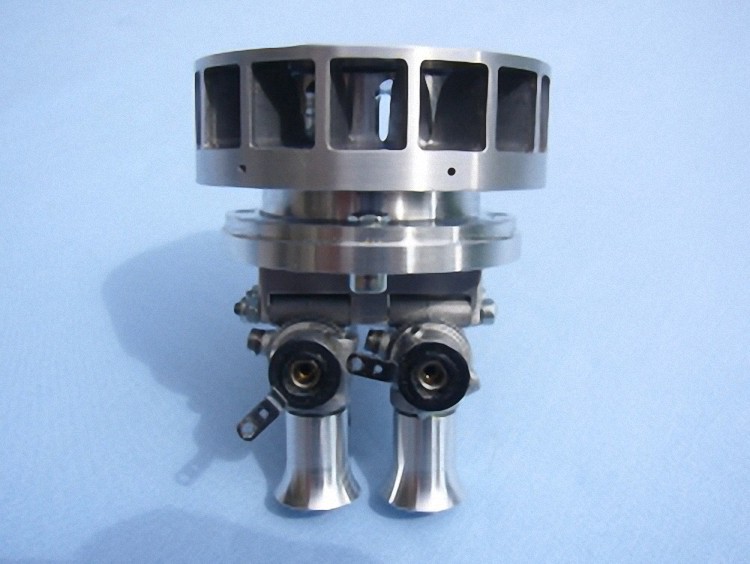

Known Theory
A method to sort this out would be to adjust the compression of the cylinders differently so that the temperature is right, i.e. the top cylinders get less compression than the bottom cylinders. The engine then doesn’t achieve top performance but it runs at optimal temperature. However, when you do stunt flying with your model airplane and make it fly on its back, you have a slight problem as the bottom cylinders are then at the top and run too rich. That is why this theory is out of the question for me.
Common Practice
You take the whole compression down, e.g. from 1:10 to 1:8. Then the engine isn’t too hot during full throttle and the effects of advanced ignition of the top versus the bottom cylinders aren’t quite as severe. I don’t do that because with too little compression the bottom cylinders too rich could fail during stationary throttle.
My Theory or Remedy
1. The radial blower is driven by the crank pins. It therefore spreads the methyl alcohol air mixture evenly outside to the suction pipes.
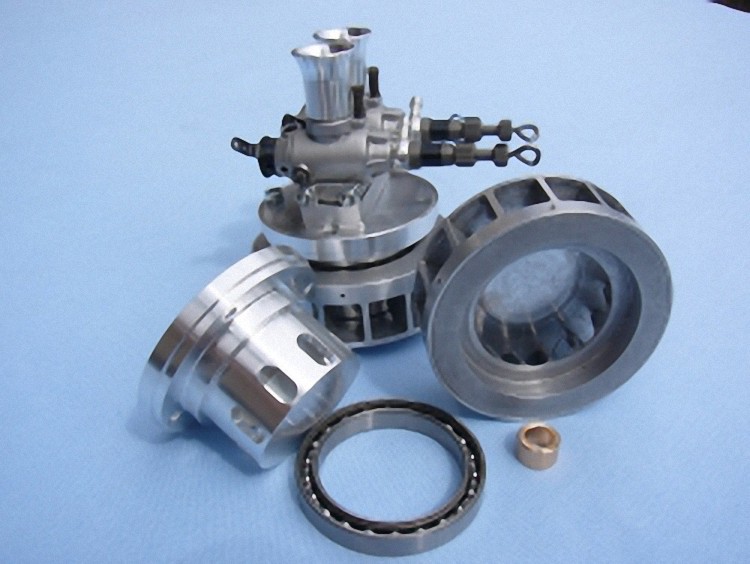

2. It enriches the too rich mixture with a fresh mixture. Therefore I can adjust the carburetor leaner.
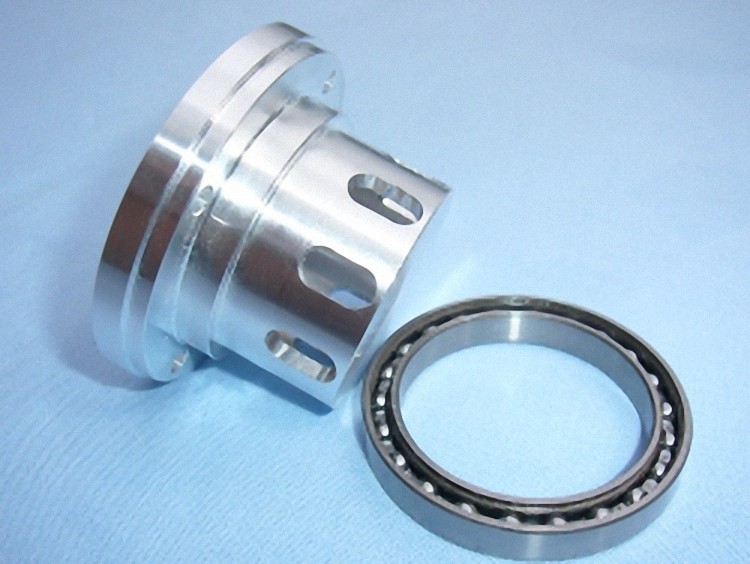
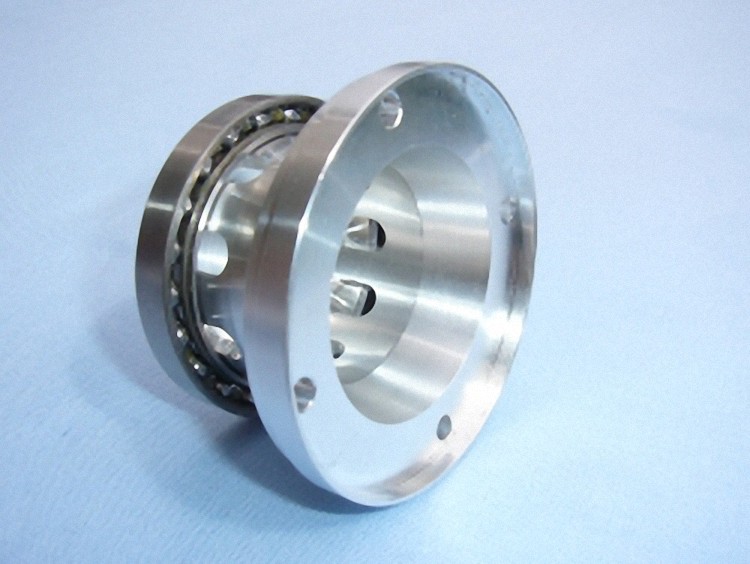
3. With the radial blower’s rotation and centrifugal force the methyl alcohol air mixture is to be rotated evenly. That is how each cylinder receives an almost equal filling!
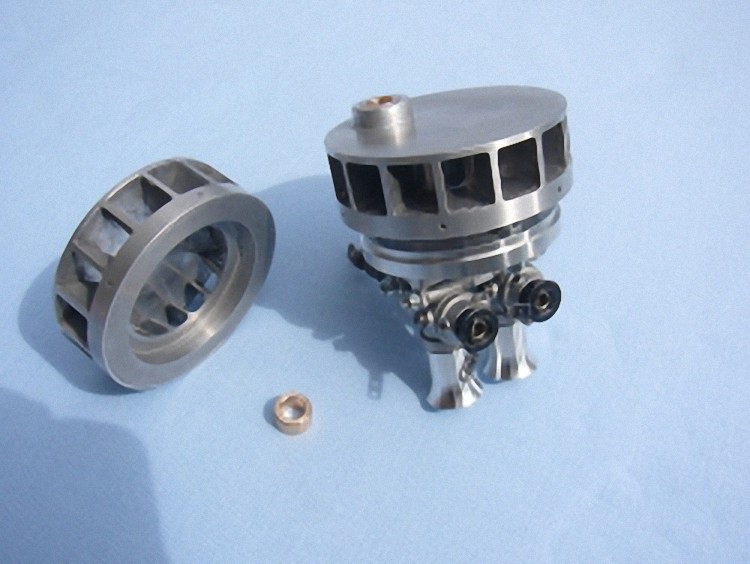

4. The vacuum in the engine case is increased with the radial blower because an additional suction effect develops, i.e. a sure stationary throttle.
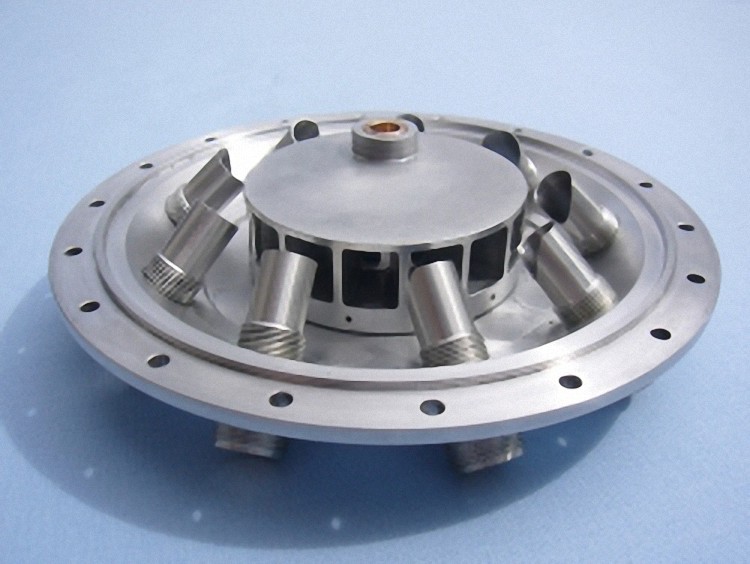
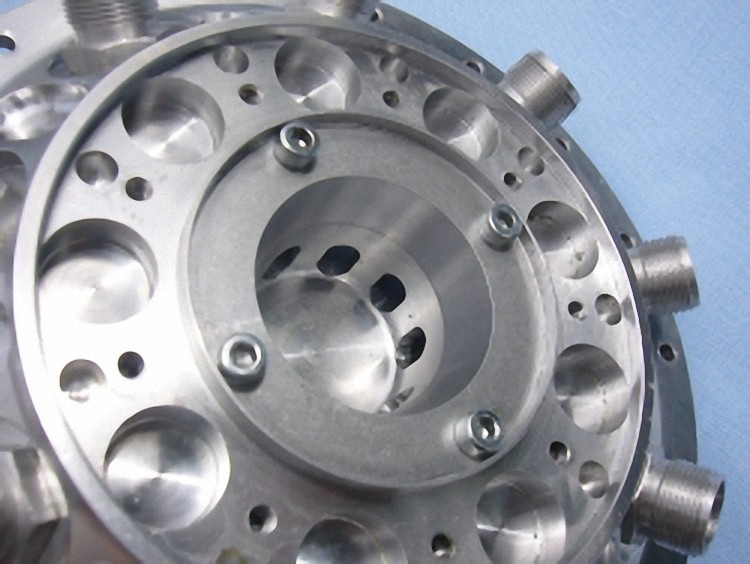
5. The disadvantage: 200 g additional weight
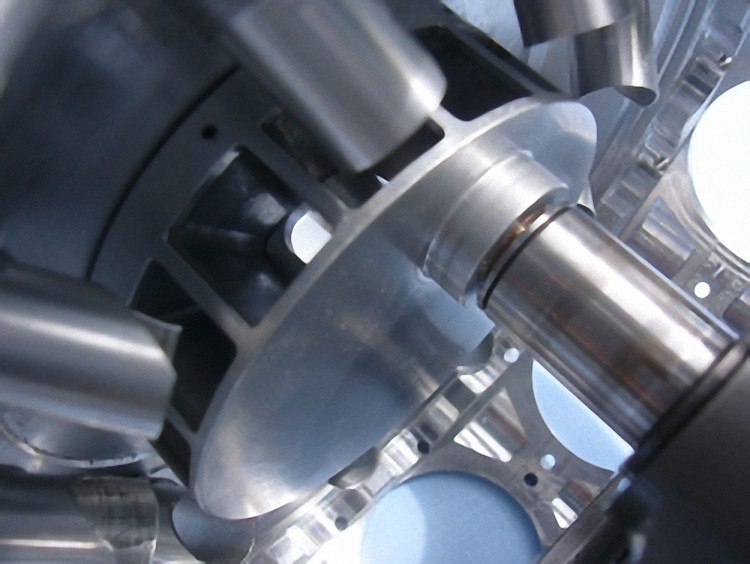
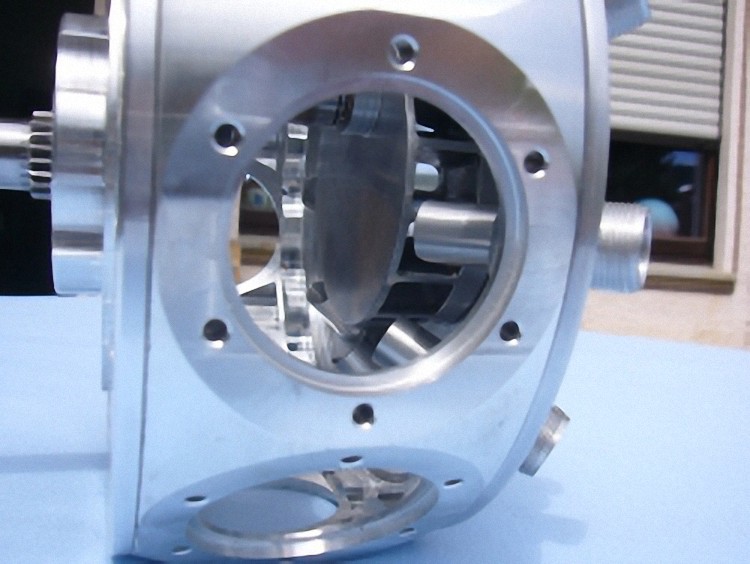
If my theory stands the test in practice, it will be included in the engine technology.
